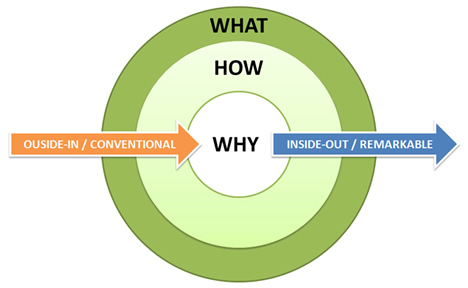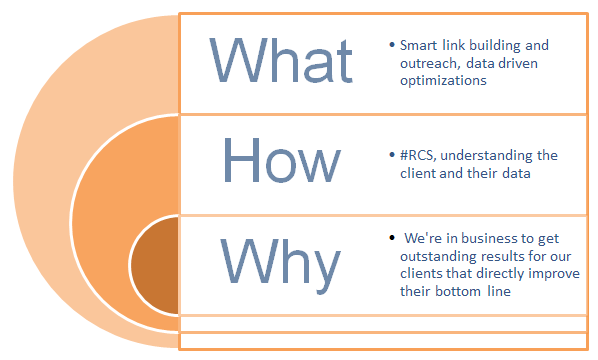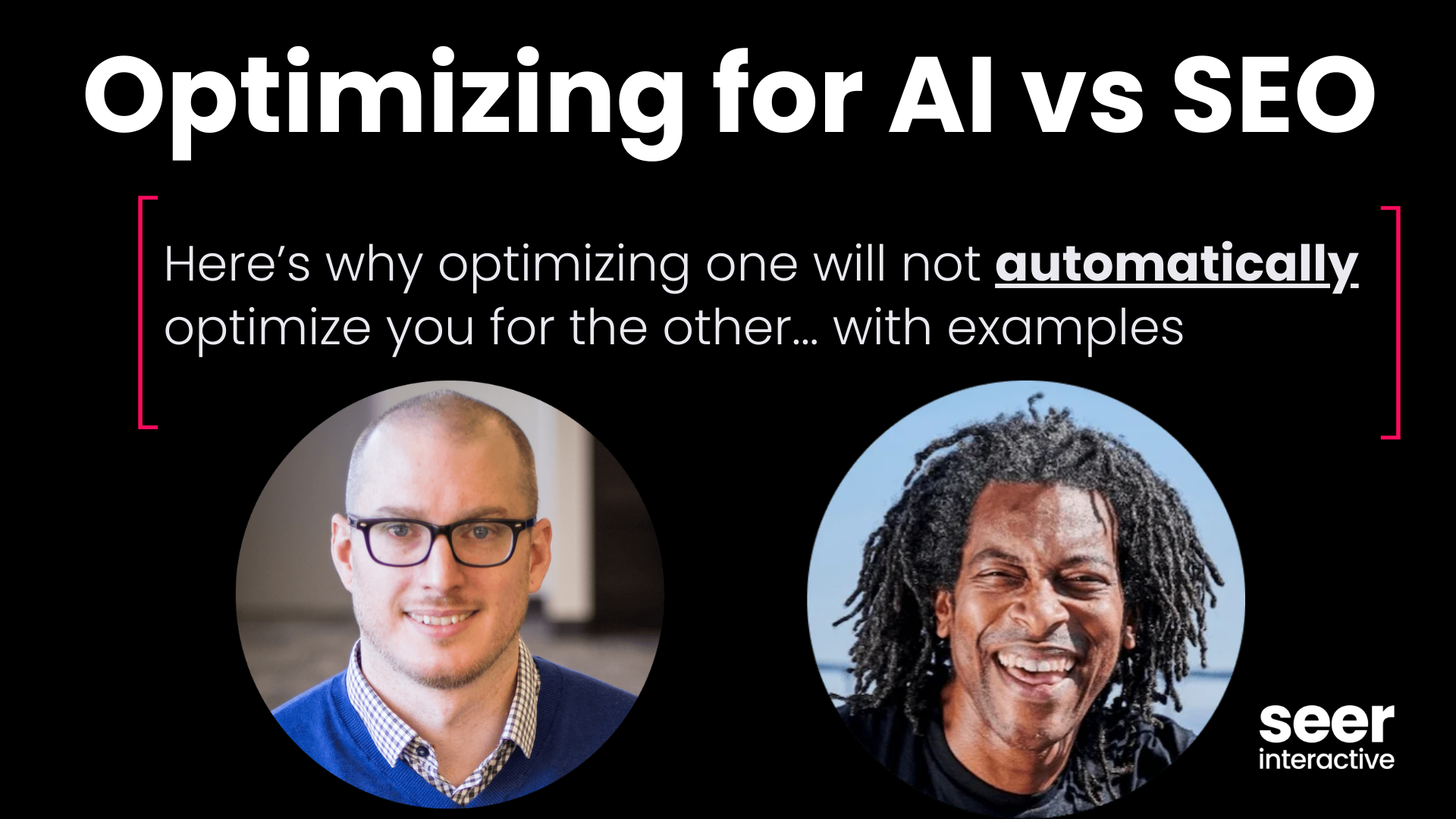One of my favorite TED talks is "How Great Leaders Inspire Action" by Simon Sinek. In the presentation he describes the concept of the Golden Circle which consists of three rings: What, How, and Why.

Sinek explains that conventional thought works from the outside in. People and organizations think about What they want to do and How they do it, but many don't consider
Why they do the things they do (beyond making money, of course.)
In contrast, the most successful and inspirational companies and individuals work from the inside out. They start with Why and let that steer the How and What. An example Sinek gives is Apple under Steve Jobs. Apple's Why was Jobs' vision of design and simplicity. This vision is what guides How they do things and What they make.
So What?
What does this have to do with SEO? Understanding the Why is crucial to thoughtful
SEO marketing. If we were to look at the Golden Circle for SEER, we would see something like this:

Examples
SEOs have focused on the How and What of our craft for a long time. This mindset gave rise to large scale linkbuilding techniques like low quality blog commenting, directories, and paid links. This mode of thinking also applies to other aspects like keyword and competitive research. Of course everyone knows that Panda and Penguin pulled the rug out from under many of these tactics...or did it? If we understand the Why, these techniques aren't something to be afraid of. Let's take a look at each:
Blog Commenting
Starting with What
- What: Links, lots of links.
- How: Bot software that will automatically blast useless comments across thousands of blogs
- Why: We need links, why not? No one reads comments anyway...
Understanding the Why
- Why: We want to contribute to our industry by sharing knowledge and building relationships in a meaningful way.
- How: We add thoughtful comments to blog posts in our niche to start or continue meaningful discussion.
- What: Some links, exposure to potential visitors and customers, and deeper relationships with our industry.
Example: The SEOmoz blog. Comments on SEOmoz are a place of discussion and learning. You're able to talk directly to others in SEO, share your knowledge, and maybe pick up a few ideas. Sure, you get a link, but isn't the knowledge you're sharing and relationships you're building more important than that?
Directories
Starting with What
- What: Easy, do-it-yourself links.
- How: Submit to all the directories!
- Why: It's so easy. They're basically begging you to add your site.
Understanding the Why
- Why: We want to be included in helpful resources that people actually use when researching our industry.
- How: Find directories that are well managed and exclusive whose audience is part of your target demographic.
- What: Links from a small group of niche directories that raise brand awareness, drive traffic, and leads.
Example: Lawyers.com
. This site is a powerhouse. It has great rankings
for broad and long tail keywords. People use it to look for lawyers in their area. If you're a lawyer and you want to get in front of people in your area, wouldn't you want a listing on this site? (Interesting how blurry the line is between high-quality directories and advertising...)
Paid Links
Starting with What
- What: Why spend my budget on a linkbuilder when I can just buy links for less?
- How: Find a network, pay money, get links
- Why: I need links fast and don't want to mess with a linkbuilder
Understanding the Why
- Why: We want to cover all aspects of media, paid, earned, and owned, but want to go beyond standard advertising.
- How: Spend money to get coverage, exposure, etc.
- What: Natural word of mouth and links from bloggers and writers with real, respected sites, not just a spammy Filipino link network.
Example: The difference between a straight up low quality paid link and a money-is-involved-but-it's-legit link is the intent. You could pay a blog network to post links across their blogs (don't do this) OR you could put together an outreach plan that involves sending your product to writers or hosting an event and inviting bloggers in your area. Both of those ideas have a cost (shipping, event planning) but the result is natural word of mouth.
Keyword Research
Starting with What
- What: High volume head terms.
- How: Identify the terms with the most traffic.
- Why: We want traffic!
Understanding the Why
- Why: We want to target keywords that drive conversions and directly impact our bottom line, regardless of traffic.
- How: This list is actually pretty long. Some highlights:
- Look at keywords or content that's converting well.
- If you're running PPC, check converting queries.
- Review internal site searches to see how visitors are finding things after they've landed on your site.
- Ask current customers/readers what kind of content they would like to see.
- What: A mix of broad and long tail keywords that not only drive traffic, but impact conversions.
Competitive Research
Starting with What
- What: Copy what our competitors are doing.
- How: Look at competitor sites, analyze their backlink profiles, and identify marketing campaigns.
- Why: Because this is how our competitors are doing it. What works for them will work for us.
Understanding the Why
- Why: We want to understand what our competitors are doing so we can do things that set us apart.
- How: Look at competitor sites, analyze their backlink profiles, and identify marketing campaigns.
- What: We'll create a totally unique strategy that immediately distinguishes us from our competitors and gives us a competitive advantage.
Conclusion
People that always consider Why they're doing something. You'll see more benefit when you understand why you're doing something instead of simply checking boxes.


